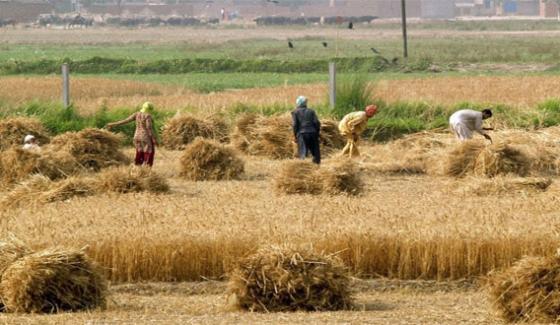The Pakistan farmers’ union, “Pakistan Kissan Ittehad” registered a protest at the federal capital on the eve of announcement of the Federal Budget 2017-18. Instead of addressing their concerns, the law enforcement authorities opted to use force against them. Police fired tear gas and unleashed water from water cannons to disperse the protesting farmers.
It is not the first time that the government has used force in response to the farmers’ protests. In September 2016, thousands of farmers under the umbrella of their aforementioned union protested in Lahore which also resulted in violence between farmers and police. As a result, police arrested over two thousand farmers.
Similarly in August 2015, hundreds of farmers protested for several days in front of Punjab provincial assembly but the concerned authorities did not pay any heed to their demands. The government’s heavy handed approach to suppressing farmer’s demands is deeply concerning. The Human Rights Watch condemned the use of force against farmers in an article in 2016 in which it was stated that “the Pakistani authorities use draconian laws and excessive force against farmers.”
Agriculture was once considered as the backbone of the country’s economy but the successive governments have turned their backbone (back) on this sector. Agriculture sector once provided employment to almost 70 percent of the country’s population but now, according to official statistics, this figure has been reduced to 44 percent. Its contribution to GDP has also been dropped from 27 to 21 per cent. Its contribution of raw material to textile and other related industry is also on the decline. The average annual growth of agriculture sector dropped from 5.4 per cent during 1980-90 to 2.2 per cent during 2011-16. Lack of modernization has resulted in decline of average growth in yields for wheat and cotton from 2.06 and 9 per cent respectively between 1980-90 to 1.4 and -2.2 per cent respectively from 2011-16.
Decline of this sector continues during the current government because of its fixation with the industrial sector and imbalanced economic policies that approach the agriculture sector as an “obsolete” area, which does not merit the government’s state-level growth oriented intervention. Though this sector was once considered as a major source of employment and foreign exchange earnings. This neglect has taken toll on the one of the most important sectors of our economy while continued fall in production has threatened the largest foreign exchange earning sector. Although Pakistan has a predominantly agricultural economy, the rapid decline in the sector has forced Pakistan into importing a number of food commodities to fulfill its own consumption needs.
Our GDP growth is one of the lowest in the region and one of the main factors behind it is the decline of agriculture sector. Pakistan has vast areas of fertile agriculture land, one of the best irrigation system in the world, nearly two third of the population living in rural areas whose major source of income is agriculture. So promotion of agriculture is of utmost importance to increase GDP, enhance industrial development, raise income of rural population and strengthen financial position of the growers.
Some of the main problems faced by farmers in Pakistan include rising input costs, indirect taxed on farm operations and inputs, support price benefits not reaching to the poorest in the farming sector, lack of innovation in seed varieties, lack of modern technology to modernize the crop harvesting, cultivation, storage and marketing, inaccessibility to agriculture credit and water shortages threatening the irrigated lands.
Small farmers who are at the nucleus of agriculture sector are often overlooked in agricultural policies. They often find it difficult to make both ends meet through their efforts and are often forced to change their profession. Government need to make sure that landlords should not dominate the entire assistances and the small farmers should also be given due share in the relief as it is vital for reviving the declining agricultural sector. Small farmers should be included in the policymaking process so that their problems can be resolved and government can get the desired results. We also need a proper mechanism to regularly monitor the policies impacting agriculture and its sub-sectors, financial position of the farmers and contribution of the agriculture.
If we want agriculture to be the backbone of our economy then it should be patronized and all of its sub-sectors should be given additional attention which will not only improve lives of the farming communities but also increase exports and ensure food security. Government need to invest in agriculture research. They need to follow the footsteps of the developed countries. If on one hand, the rest of the world has turned to precision farming, using GPS sensors, nitrogen sensors and guidance system in agriculture farming but on the other hand, we haven’t even adopted the basic farm machinery. Lack of interest on the part of government coupled with farmers’ resistance to change has led to a dismal state of agriculture sector.
Government has announced special packages and fiscal incentives for the agriculture sector over the years but these measures are not enough for its revival. These short term packages are no more than political stunts and cannot be an answer to structural problems faced by agriculturists.
We need to put in place an extensive and carefully formulated long term plan for the revival of agriculture sector. All the government bodies including Agriculture ministry, the Planning Commission, provincial agriculture and planning departments need to join hands and put forward a comprehensive national plan. The federal and provincial governments must ensure the implementation of this plan so that agriculture sector regains its past glory.





